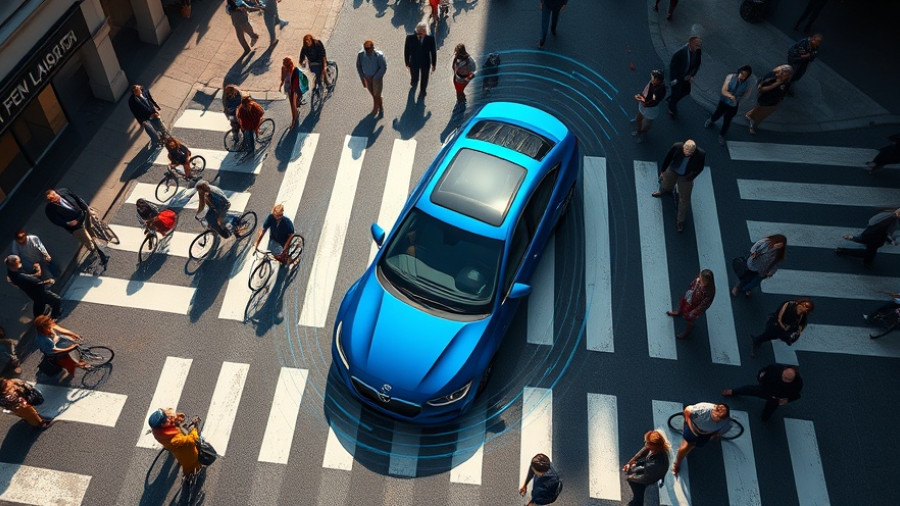
Emerging Challenges in Pedestrian Safety Tech
As pedestrian deaths continue to increase in the United States, researchers are highlighting a critical flaw in Automatic Emergency Braking (AEB) systems designed to enhance vehicle safety. A recent study by AAA has revealed that although these systems have made strides in pedestrian detection, they still struggle dramatically under nighttime conditions when pedestrians are most at risk. With a staggering 7,318 fatalities reported in 2023 alone, this issue demands urgent attention as it speaks directly to the safety of our local communities.
The Struggles of Detection at Night
The AAA study found that pedestrian detection systems failed to recognize a crash test dummy approximately 40% of the time during nighttime scenarios, even under ideal conditions at a modest speed of 25 miles per hour. This failure rate is particularly alarming given that the majority of pedestrian fatalities occur on roads with speed limits greater than 35 mph; in fact, 80% of pedestrian deaths between 2018 and 2022 happened under these circumstances. These numbers starkly contrast with those from more pedestrian-focused nations, raising concerns about the adequacy of technology in American vehicles.
Growing Concerns and Industry Reactions
Greg Brannon, the director of automotive research at AAA, emphasized the urgency of the situation, noting, "US traffic fatality statistics are an embarrassment." It's not only a matter of technology but also of accountability within the industry. High-visibility attire, usually recommended for pedestrians to be seen better at night, paradoxically interferes with the AEB systems' detection capabilities, further jeopardizing safety. In tests, outfitting the dummies in reflective clothing caused some AEB systems to perform worse, including instances where notable car brands like Honda and Toyota struggled to detect them at all.
Understanding the Irony of Safety Gear
Reflective gear is designed with the intent of increasing visibility in low-light conditions, yet the data suggests that under certain conditions, it does the opposite. This irony underscores a fundamental flaw in pedestrian detection systems and raises questions about automotive technology's reliability. Other studies, such as those conducted by the Insurance Institute for Highway Safety (IIHS), further confirm that these AEB systems perform significantly better during daylight hours, showcasing a 27% reduction in pedestrian collisions compared to vehicles lacking the safety feature.
Seeking Regulatory Changes
Given the troubling findings, experts are calling for stricter regulations and industry standards that mandate improvement in pedestrian detection technologies. Currently, there is a glaring lack of regulations concerning the effectiveness of AEB systems at night. As pedestrian-focused infrastructure initiatives continue to take root in the San Francisco Bay Area and beyond, it is crucial for vehicle manufacturers to step up and ensure that safety technologies live up to their promises.
Community Impact and Action Steps
The effects of pedestrian fatalities ripple through communities, impacting families across the nation. Local advocates push for infrastructure changes that prioritize lighting and safety measures for pedestrians. As community members, it’s vital we engage in conversations that drive initiatives for safer streets and hold manufacturers accountable for the technologies they promote. Whether you're walking, biking, or driving, understanding the technological limitations can help you make informed decisions about safety.
What Can We Do?
Awareness is the first step towards change. Remember that safety begins with education; both understanding your vehicle's technology and advocating for better infrastructure at the community level can save lives. Talk to local representatives about the need for pedestrian-friendly policies and be an active participant in advocating for safer streets. This is not just about technology—it's about human lives and fostering a community that cares.
 Add Row
Add Row  Add
Add 



Write A Comment